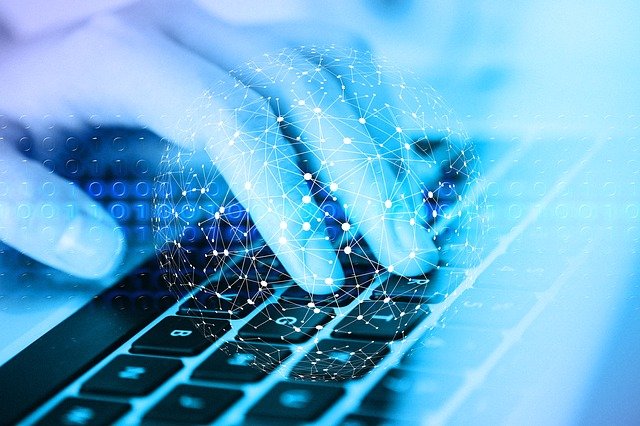How age-old healthcare systems can lead patients’ data or medical facilities at high risk?
January 17, 2022Presently, most healthcare providers are using age-old or legacy healthcare systems in their facility to store the records and data of the patients. And so, such software is prone to cyber attacks. This is one of the real tech challenges the healthcare centers are facing .
While health records or patient data may not seem very lucrative for instant financial gain, it can be used to commit fraud or blackmailing.
There have been data breach incidents in the past like the mental health startup Vastaamo, which used an easy-to-use technology for storing the data. This became an easy target of the hackers who leaked all the data. This is just one example, while there could be many due to healthcare legacy software systems.
Cyber thieves are constantly on the lookout for such healthcare centres, hospitals, or clinics operating for a while and are still using hospital management software that has become obsolete.
The last couple of years witnessed the impact of Covid-19, which also became the recent target of cyber attacks. During the last year in the UK, one in four cyber attacks were related to Covid-19. The attack on the vaccine supply for Covid-19 is one of such attacks. The data attackers employ a variety of methods to make profits from medical records, including malware, ransomware, phishing, and password spraying.
In spite of the methods used, cyber thieves target healthcare centres as they are well aware that their healthcare legacy software is not as advanced as those of the corporate houses.
How outdated hospital management software systems are becoming a global threat?
You must be aware that most of the medical systems are publicly funded. The health records or data are stored in healthcare legacy software running on outdated and old technology worldwide.
More often, the cyber thieves find it easier to attack such systems and gain complete access. Therefore, there is a dire need to secure this sensitive and private data.
Since most of the technologies used in the older hospital management software are no longer relevant or subject to any update, they become extremely vulnerable to cyber attack.
From patient-doctor communications to diagnosis, including MRI and x-rays of the patients, everything on a patient’s file is subject to the public eye if there is a data breach.
Imagine the situation whereby you have discussed your acute health problem with your doctor in their private chamber with complete confidence, thinking it’s between you two. And one day, you find the exact data posted on a website or elsewhere. Thinking of such an incident can give shivers to any strong person.
What are the main causes of a data breach in age-old healthcare software?
Here we list the five main causes that can lead to a data breach:
Legacy Systems: With the adoption of electronic health records (EHR) in healthcare institutions, the chances of cyber attacks may increase if the institutions are not updating their healthcare legacy software.
Cloud Threats: With more storage requirements for patient data, most healthcare apps are utilising cloud storage. However, cloud computing systems are susceptible to a data breach.
Transfer of EHR: The stored data is more susceptible to data breaches during EHR transfers. The stored data can be easily copied by third parties, and it can be lost while transferring due to system fragility.
User Errors: There can sometimes be internal app errors due to wrong coding, bugs, and unfriendly user-interface design. Sometimes, patients ignore the security of their login credentials which may lead to their account loss.
Third-Party Data Access: Third-party data access is a risk factor that may significantly impact a company’s image and workflow. Attackers can take advantage of it by selling/disclosing the patients’ data.
What is the cost of a cyber attack?
On average, the cost of a health data breach is around £5.27 million. This is probably amongst the most expensive data breaches across vulnerable sectors. The cost includes remediation following the attack, reinstating services back online, and taking measures to avoid similar attacks happening again.
In addition, the healthcare centres may be required to pay hefty fines to regulators if they fail to ensure the necessary level of security.
The General Data Protection Regulations (GDPR) has the highest fine of £18 million or 4% of income, whichever is higher. For medical centres, such fines are enormous, and they may leave them on the verge of collapse.
What is the way forward?
To secure and safeguard itself against growing cyber attacks, the healthcare industry should assess its existing hospital management software systems and estimate the cost of its investment against the cost of any cyber attack.
The healthcare centre or hospital may feel burdened investing in the latest and updated technology systems, but in the long run, it will prevent them from losing much more than that.
In a way, the healthcare organisations and hospitals help the most vulnerable patients, making them the key target for cyber thieves looking to exploit weaknesses. It may sound abhorrent, but then it’s a fact. To avoid this, it becomes highly critical for healthcare organisations to invest in the most advanced hospital software backed by up-to-date technology to ensure that all patient records and data remain safe and secure.
To conclude, it’s recommended to replace the age-old hospital management software systems with world-class applications with security at its core, developed by a well-established company. SoftClinic, backed by the JVS Group, is a suite of healthcare software, designed to empower hospitals and clinicians with transformative digital solutions. The software is compliant with International Standards such as HIPAA, HL7, FHR, ISO and more. It has served more than 5.3 million patients in more than 45 countries for over two decades.

0 Comments